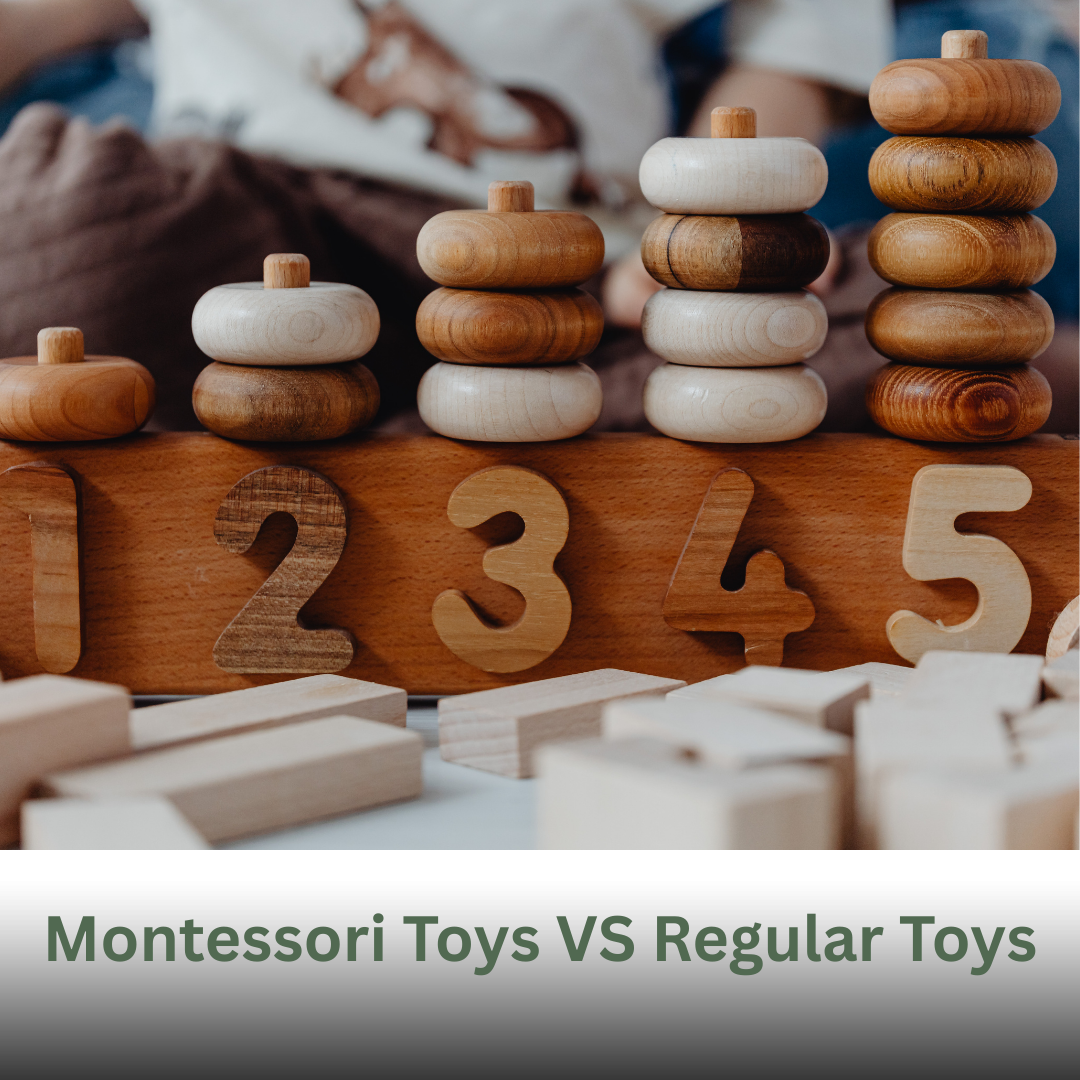Montessori Toys vs. Regular Toys – Why Parents Are Making the Switch
When it comes to your child’s development, the toys they play with matter more than you think. While the shelves of toy stores are stacked high with bright, plastic gadgets that light up and make noise, there’s a quieter, more purposeful alternative that’s capturing the attention of parents worldwide — Montessori toys.
In this post, we’ll explore why Montessori toys aren’t just another trend, but a proven tool for nurturing a child’s mind, independence, and creativity — all while keeping play 100% screen-free.
1. Purpose Over Distraction
Regular plastic toys often rely on flashing lights, loud sounds, and pre-programmed actions. While these can grab your child’s attention, they often make your little one a passive observer instead of an active participant.
Montessori toys, on the other hand, are designed with purpose. They focus on hands-on activities that encourage problem-solving, motor skills, and independent thinking — without overstimulation.
2. The Best Option for Screen-Free Play
In today’s tech-driven world, it’s easy for children to spend hours glued to tablets or TVs. But too much screen time can slow cognitive development, reduce attention span, and limit creativity.
Montessori toys offer a healthy alternative — immersive, hands-on play that keeps children engaged without a single pixel in sight. Activities like busy boards, puzzles, and threading sets keep little minds active while building skills that screens can’t teach.
3. Building Real-Life Skills
Montessori toys are inspired by real-world tasks. Busy boards, dressing frames, and stacking blocks mimic activities your child will actually use in daily life — tying shoelaces, buttoning clothes, counting, sorting, and more.
These activities help develop:
-
Fine motor skills
-
Hand-eye coordination
-
Focus and concentration
-
Problem-solving abilities
4. Less is More – Encouraging Creativity
When a toy does everything for the child, there’s no room for imagination. Montessori toys keep designs simple so kids have to use their own creativity to engage.
For example, a shape sorter encourages a child to figure out where each piece belongs, while a plastic musical toy simply plays tunes at the push of a button — no thinking required.
5. Sensory-Rich Learning Without Overstimulation
Montessori toys provide multi-sensory experiences — touch, sight, and sometimes sound — in a calm, focused way. This allows children to fully process and absorb what they’re learning instead of being overwhelmed by noise and flashing lights.
6. Eco-Friendly & Long-Lasting
Most Montessori toys are made from natural, non-toxic materials like wood and cotton, making them safe for little hands (and mouths). Unlike plastic toys that break easily and end up in landfill, Montessori toys are durable, sustainable, and often passed down to younger siblings.
7. Independence from an Early Age
One of the key Montessori principles is empowering children to do things for themselves. Toys like busy boards and dressing frames help kids practice skills without constant adult help — building confidence and self-reliance from the start.
Final Thoughts – A Smarter Way to Play
While flashy plastic toys might entertain for a few minutes, Montessori toys engage, educate, and inspire for years. They help children develop the skills they need for life while keeping playtime meaningful — and completely screen-free.
If you want your child’s playtime to be more than just “keeping them busy,” consider making the switch to Montessori. Your child’s brain, creativity, and confidence will thank you.
🛒 Explore our MontiMeadow™ Montessori Busy Board and other skill-building toys – now on sale for a limited time!
